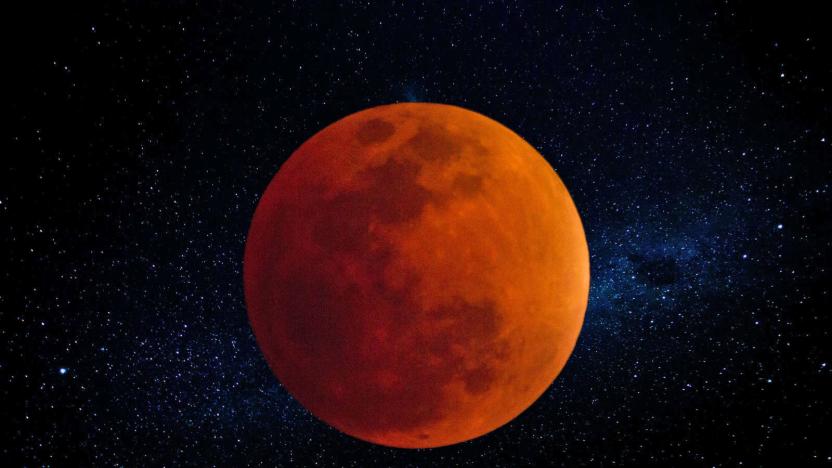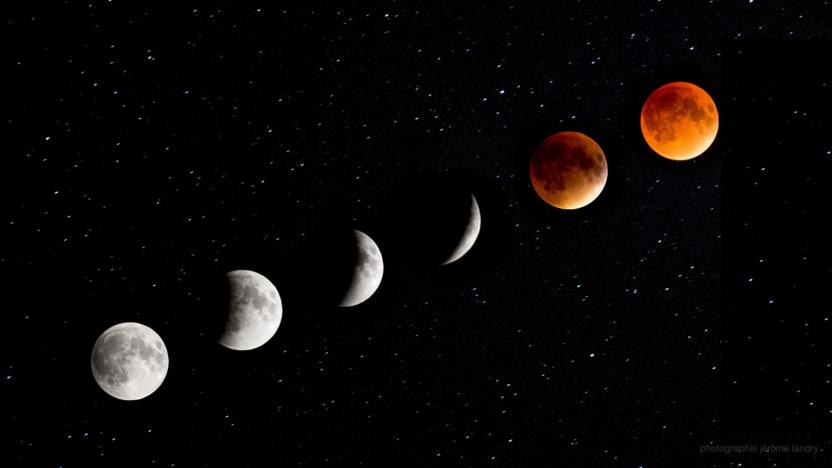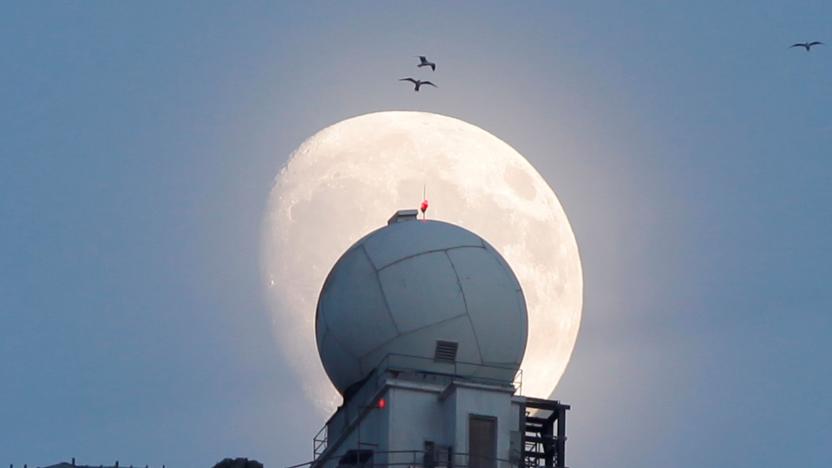SuperMoon
Latest

NASA will stream Wednesday’s rare blue moon lunar eclipse
On Wednesday, parts of the US will get to view a very special lunar eclipse. While typical lunar eclipses aren't terribly rare -- the next full one viewable from North America will occur in January 2019 -- this one combines a total eclipse with a supermoon and a blue moon, making it a sort of moon event triple threat. While not all of the US will get to see the entire eclipse, NASA will be televising it online and giving views from California and Arizona.

A rare Blue Moon lunar eclipse will happen this month
One of the more exciting events of 2017 was the total solar eclipse that was viewable across the US. And if you enjoyed it as much as I did, I have some good news for you. While the US won't be getting another look at a total solar eclipse until 2024, parts of the US will get to see another rare eclipse in 2018 and they'll get to check it out this month.

Watch the largest supermoon in 68 years
You're about to get one of the best views of the Moon in decades. When the celestial body reaches its closest point to the Earth in the early hours of November 14th (in the US, shortly after 6AM Eastern), it'll be the largest supermoon observed in over 68 years -- yes, it hasn't been this near since 1948. And you won't see a comparable supermoon again until 2034, so you might want to step outside if you at all can. Don't despair if clouds, work or the time of day prevent you from getting a glimpse, though. There will be ways and times to watch where you'll still have a grand view.

A supermoon lunar eclipse is a pretty rare thing, so go look at it now
If you're thinking the moon is looking particularly foreboding, don't worry. Your eyes aren't playing tricks, and nor is it the end of days, but a lunar phenomenon that happens once roughly every 30 years. If you look outside now, you'll see a supermoon lunar eclipse: a combination of a very nearby moon -- making it look up to 14 percent bigger -- and reflected orange hue from the sun, which is lined up with the moon and the Earth. Get your camera out (or hold your phone real steady), and go outside. But if you don't really like "outside", NASA's offering its own livestream right here. And if you miss it, you'll just have to wait til 2033.

Total solar eclipse coincides with supermoon and spring equinox
The end is nigh, Engadget readers: a triumvirate of celestial events is happening simultaneously. Okay, that might be a bit of an overstatement, but until we hit the other side of today's supermoon, spring equinox (yay!) and total solar eclipse, we just won't know. As The Wall Street Journal tells it, this sort of thing is "extremely unusual." Total solar eclipses -- where the moon plays middleman and blocks the sun from our view -- happen about once every year-and-a-half. Supermoons and the equinox? A handful of times per year and once annually, respectively.

In Pictures: The spectacle of the 'Supermoon'
The term "supermoon" is one borrowed from astrology. Scientists would prefer to call the phenomenon a perigee moon, or perigee-syzygy of the Earth-moon-sun system. In lay terms, it's when a full moon coincides with its closest approach to Earth. There was one this weekend, which caught the attention of photographers and casual observers around the globe. Some highlights of which are in the gallery below.

LED Moon shines message of hope, no dark side to see
Scale models of manmade wonders are usually the stuff of gimmicky travel souvenirs, but could you resist a faithful replica that was a topographic clone of our closest celestial body? We didn't think so. Dedicated to the super moon that brought his catastrophe-stricken nation comfort, Japanese designer Nosigner culled imagery taken by the lunar orbiter Kaguya to create a hope-swelling, LED-lit copy of Earth's favorite satellite. Recently on display at the Dwell on Design exhibit in LA, this spherical lamp of lunar love doesn't yet appear to be available for order -- but then again, how do you put a price on hope?





